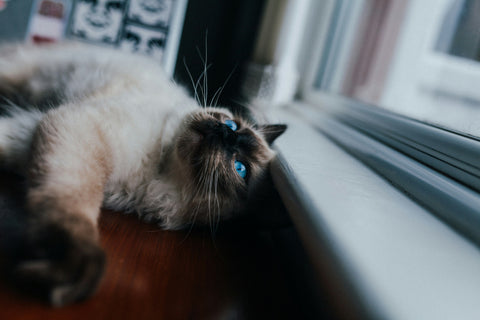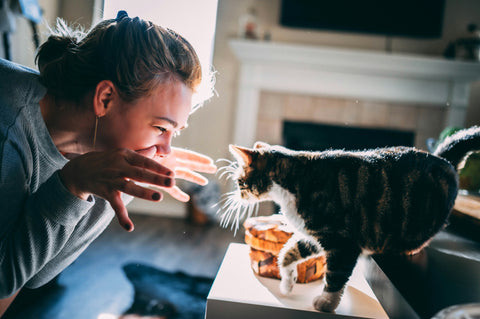Cats, like us, go through a broad spectrum of emotions.
Cats, unlike us, are physically incapable of vocalizing their emotions with words.
Needless to say, this complicates things - Cats are far more subtle than humans when it comes to expressing emotions, so it is important to recognize the signs when your cat is under stress, as well as understanding the potential root causes of their stress.
Spotting signs of stress
In order to prevent themselves from becoming easy targets for predators, cats evolved in such a way that they are able to conceal signs of pain and stress. Unfortunately, this often means that cat owners are unaware of anything wrong with their cat until the problem worsens significantly.
This oftentimes manifests as sudden changes in your cat's habits, such as scratching furniture if it didn't do so before or hiding itself in dark spaces if your cat was previously extroverted. Cats can also express their stress through changes in their day-to-day activities, such as an increase/decrease in the amount of food they eat or not using their litterbox when toileting.
Cats emote with body language, which extends to stress and anxiety. Common signs of an anxious cat include:
-
Widened, dilated pupils

- Flat ears, or perked ears with one pointed to the side

- Whiskers pointing forward or curving downward

In addition, your cat might undergo behavioural changes when under stress. If your cat is hissing or scratching things more than usual, it is likely that the cat is stressed and expressing itself through aggression. Cats also groom themselves excessively when stressed, either through cleaning themselves too much or excessive lip licking.
What's causing the stress?
Feline stress is often the result of changes in their day-to-day routine, or being unable to ease itself into one.
Cats need time to grow comfortable with their surroundings - if it is introduced to a new environment, people, or fellow cats, it will tend to be more alert until it becomes familiar with it. Small changes to its current living environment can also cause stress, such as changing the layout of your home's furniture.
As mentioned earlier, cats are naturally inclined to mask signs of pain and discomfort. This can be from any variety of health complications, ranging from injury to illnesses, which further complicates things. If your cat begins acting erratically without any changes being made to its daily routine, there is a possibility that it is unwell - consider making a visit to your vet if this is the case.
Cats can also be stressed from an environment that does not stimulate or enrich them sufficiently. Cats require a lot of physical and mental stimulation for their mental upkeep, so it is important to provide them with toys and facilities for their physical needs else they grow bored and stressed. They also need ample room to play and live in - a cage or litterbox that is too small can stress out your cat, as can keeping it caged up for long periods of time.
Possible solutions
It is difficult to determine the precise cause of your cat's stress, but ensuring that it has a safe, consistent and nurturing environment to live in can help to mitigate the possible culprits. Ways to improve your cat's home environment include:
- Creating a safe space for your cat to hide in when it feels stressed
- Furnishing as large a litterbox and cage as possible for your cat
- A variety of toys for your cat's physical and mental stimulation
- Consistent feeding and play times
- Gradually introducing your cat to new stimuli, such as environments, people or pets
It should be noted that while these tips can help improve your cat's quality of life and overall happiness, seeking a medical professional should still be your highest priority. You should not assume that you know what's best for your cat, lest something happens to your feline companion that could have been prevented with a visit to the vet.
To conclude, your cat has a lot of psychological needs that are not immediately obvious, and can often be subtle with expressing them. Therefore, it is important to recognize when your cat is stressed or anxious so that you can act on it immediately. By ensuring that your cat has a secure and enriching environment to live in, you can mitigate a lot of potential sources of stress for your furry companion and keep it happy for longer.




Comments (0)
There are no comments for this article. Be the first one to leave a message!